Unit - 2
Classification
Carl Linnaeus in the 18th century, had published a system for classifying living things, which was a major development in the modern classification system. Scientists around the world use this system of classification as Linnaeus discovered the complex relationships and was also was the first scientist to propose a hierarchal naming structure that suggested information both about what the species was (its name) and also its closest comparative species.

Fig 1: Linnea classification system
In the 18th century, Carl Linnaeus published a system for classifying living things, which has been developed into the modern classification system.
Despite this classification existing for hundreds of years, the classification —taxonomy — is far from dead. Classification of many species, that may be old and new, continues to be officially disputed as scientists find new information or interpret facts in new methods or ways. The major outbreak in DNA analysis has resulted in change of species name though Arguments are fierce such concerns happen after a lot of information is collected before taking the big step. Sometimes the basic genetic analysis information can change our perception as to how two closely related species and their classification can change sometimes.
Overall, the most difficult part being that discovering a new organism is much simpler than formally categorizing an organism, study co-author Worm said. "It's a long process," he said. Most scientists "will in their life time describe dozens of species."
Unfortunately, extinction rates have increased to ten to a hundred times when compared to their natural level, Worm added.
The study of human or Animal form and their body shape is termed as Morphology. It is the branch of biology which deals with the study of the form of organisms it includes both the internal like bones and organs and external appearance like shape colour pattern and structure and also their related structural features, therefore the word Morphology refers to the organism as a whole. Morphology is contrasted to physiology, which primarily deals with function.
Typically, morphology lies in contrast with physiology, which deals with studies of the functions of organisms and their parts; function and structure are so closely interrelated, Morphologists were originally concerned with the muscles, bones, nerves, and blood vessels comprised by the bodies of animals and the stems, roots, leaves, and flower parts comprised by the bodies of higher plan, with the development of the electron microscope and the methods for preparing ultrathin sections of tissues created an entirely new aspect of morphology—that involving the detailed structure of cells. Electron microscopy has gradually revealed the amazing complexity of the many structures of the cells of plants and animals. Biologists have investigated the morphology of complex molecules by means of Other physical techniques complex molecules such as haemoglobin and gas-carrying protein of blood, and deoxyribonucleic acid (DNA), of which most genes are composed. Thus, morphology the study of biological structures over a tremendous range of sizes, from the macroscopic to the molecular.
The term biochemistry is similar with two older terms: biological chemistry and physiological chemistry. These highlights of biochemistry deals with the chemistry and function of very large molecules (e.g. nucleic acids and proteins) are often categorised under the term molecular biology. Biochemistry is a young science that came into existence only since about 1900. Its origins, however, can be traced much further back; its early history is part is of both physiology and chemistry.
In spite of these early fundamental experiments and discoveries, rapid progress in biochemistry had to rely upon the development of structural organic chemistry, one of the great achievements that occurred during the 19th-century science. A living organism contains many thousands of different chemical compounds. The elucidation of the chemical transformations undergone by these compounds within the living cell is a central problem in biochemistry. This clearly indicates, the determination of the molecular structure of the organic substances present in living cells had to follow the study of the cellular mechanisms, where these substances are synthesized and degraded.
Ecology is the study of populations, organisms and communities as they relate to one another and interact in the ecosystems they are present in, Within the discipline of ecology, researchers work at four specific levels, sometimes discretely and sometimes with overlapping. These levels are population, community, organism and ecosystem. In ecology, the ecosystems are dynamically-interacting parts, which include many organisms, the communities they comprise, and the non-living (abiotic) components present in their respective environment. Ecosystem processes, such as primary production, pedogenesis (the formation of soil), nutrient cycle, and various other niche construction activities, regulating the flux of energy and matter for a given environment. These processes are maintained by organisms with specific life-history features. The different forms of organisms, called biodiversity, that refer to the different species, genes, and ecosystems, enhances certain ecosystem.
The study of biology is ordered in the hierarchy of life. It describes how emergent properties appear as we move to more inclusive systems. Life forms is described at the following levels; atom, molecule, macromolecule, organelle, cell, tissue, organ, organ system, organisms, population, community, ecosystem, biome and finally biosphere
In this hierarchy, each higher level exists only when all lower levels are found intact (single celled organism don’t include tissue and organ levels). Importantly, each higher level provides novel or emerging properties not present at any lower level, an important feature of complex systems.
Lower-level changes or disturbances affect higher level properties. This hierarchical model, explains the cause of diseases and the mechanism of evolution. The evolution depends on random mutations that occur at the DNA level affecting higher level properties at the cellular and organism level.

According to the history of biological classification, Aristotle, a Greek philosopher had classified a range of Animals based on their characteristics and habitats etc. Later, a Swedish botanist Carolus Linnaeus introduced Taxonomic Hierarchy Categories during the 18th Century, and this category system of classification is followed globally date.
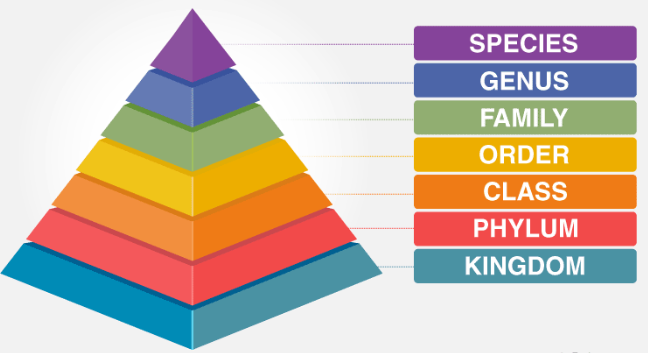
Fig:2 “The hierarchy is a process or a structure showing different levels of arranging various organisms of biological classification into successive levels which are either in a decreasing or an increasing order from kingdom to species and vice versa.”
Shown below are the important taxonomic hierarchies in which different organisms are classified:
Kingdom
The kingdom falls at the highest level of classification among the hierarchy, which is further divided into subgroups at various levels. There are 5 kingdoms at this level in which the living organisms are classified, namely, Monera, Fungi, Plantae, Protista, and Animalia.
Phylum
This is present at the next level of classification and is more specific than the kingdom class. The Kingdom Animalia consists about 35 phyla. For Example – Chordata, Arthropoda, Porifera etc
Class
Class was the most general rank class present in the taxonomic hierarchy until phyla were not discovered. There are 108 classes in Kingdom Animalia includes 108 classes this class also includes class Mammalia, aves and reptilia, etc. However, the classes used today’s world are totally different from those proposed by Linnaeus and are not used frequently in his era.
Order
Order is a more specified and accurate rank than class. The order constitutes one or more than one family that are similar in nature. Order has around 26 orders in class Mammalia such as carnivora, primates, etc.
Family
This category of taxonomic hierarchy includes various genera that share less similarities. For e.g., the families that come under the order Carnivora include Ursidae, Canidae, Felidae, etc.
Genus
Genus belongs to a group of species which are similar they constitute the genus. Some genera have only one species and is known as monotypic, whereas, some have more than one species and is known as polytypic. For e.g., The Genus Panthera consists of lion and tiger.
Species
In the taxonomic hierarchy the Species class occupies the lowest level. The class consists of about 8.7 million different species on earth. The species refers to a group of organisms that are similar in form, shape, reproductive features. Species can be further divided into sub-species.
Classification Based on Cellularity
Unicellular
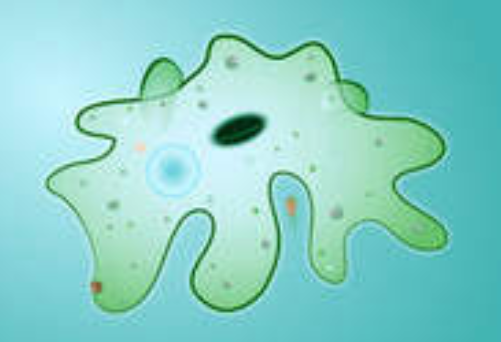
Fig 3: Shows the picture of a Unicellular Organism-Amoeba, they possess single cells and all the life activities occur in that single cell
(a) Multicellular
A tissue, organ or organism that is made up of many cells is known as multicellular. Humans, Animals, plants, and fungi are multicellular organisms in nature and often, there is specialization of different cells for various functions. Multicellular organisms assign biological responsibilities such as barrier function, circulation, digestion, respiration and sexual reproduction that are assigned to specific organ systems such as the skin, heart, stomach, lungs, and the sex organs. These organs are composed of many different cells and cell types that work together to perform specific tasks.
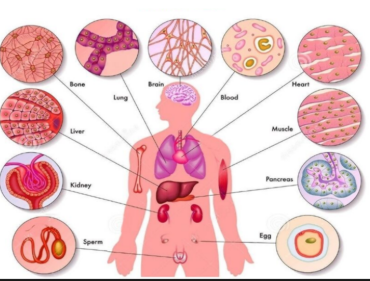
Fig 4: Humans are multicellular organisms. That possess more than one cell and each cell is assigned a specific function.
(b) Ultrastructure
Eukaryote, any cell or organism that possesses a clearly defined nucleus. The eukaryotic cell has a nuclear membrane that surrounds the nucleus, in which a well-defined chromosome (bodies containing the hereditary material) are located. Eukaryotic cells also contain organelles, including mitochondria (cellular energy exchangers), a Golgi bodies (secretory device), Lysosomes which is a digestive apparatus an Endoplasmic reticulum (a canal-like system of membranes within the cell).
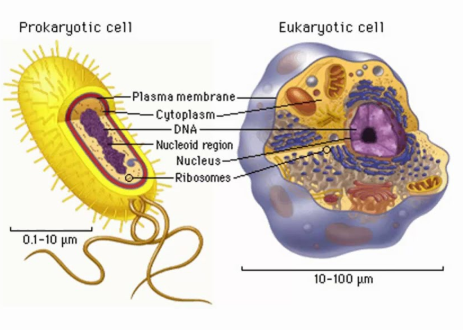
Fig: 5 The above pictures show a Prokaryotic cell and the Eukaryotic cell, the most distinctive difference being presence of Nucleus and cell organelles.
(c) Energy and Carbon Utilization
Autotrophs are organisms that can prepare their own food, using materials from inorganic sources. The word “autotroph” is derived from the root words “auto” for “self” and “trophy” for “food.” An autotroph is an organism that prepares its own food, without depending on other organisms.
Autotrophs are extremely important and, in the absence of these Autotrophs, no other forms of life can exist. Without plants that create sugars from carbon dioxide gas and sunlight through the process called photosynthesis.
Autotrophs are often called as, “producers.” As Autotrophs are producers they mainly form the base of the ecosystem’s energy pyramid, and provide the food for all the food for the next levels of organisms and heterotrophs (organisms that must get their food from others) need to exist.
Autotrophs more rarely, obtain chemical energy through oxidation (chemoautotrophs) to make organic substances from inorganic ones. Autotrophs prepare their own food and do not consume other organisms; the Autotrophs are most often consumed by heterotrophs.
A heterotroph is an organism, they are also called consumers in the ecological pyramid, they are organisms that cannot prepare its own food by carbon fixation and therefore depends on plants or animals for nutrition from other sources of organic carbon, mainly plant or animal matter. When we consider a food chain, heterotrophs are secondary and tertiary consumers.
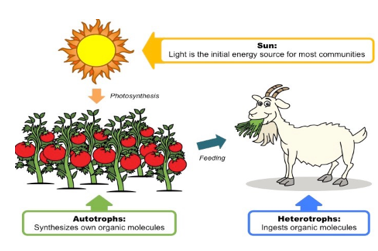
Fig 6: Autotrophs are also called Producers as them prepare their own food using photosynthesis. Heterotrophs on the other hand are called consumers that depend on Autotrophs for their food.
An organism that obtains its energy from inorganic compounds (such as ammonia) through electron transfer, lithotroph is derived from (Greek word lathes, meaning “stone”), is the ability of organisms to obtain energy by the transfer of electrons from hydrogen gas to inorganic acceptors. It has been proposed that the earliest forms of life on Earth used lithotrophic metabolism and that photosynthesis was a process was later identified.
(d) Ammonia excretion
Amino telic: An amino telic organism excretes nitrogenous waste as soluble ammonia. Most of the aquatic animals including crustaceans, platyhelminths, protozoans, cnidarians, poriferans, fishes, echinoderms, larvae / tadpoles of amphibians are amino telic.
Ureotelic: A ureotelic organism are the ones that excretes excess nitrogen as urea. Urea is less toxic compound and require less water in comparison to Ammonia. Ureotelic organisms include cartilaginous fish, adult amphibians, few bony fish and mammals including humans.
The uricotelic organism excretes uric acid or its salts. In comparison to Ammonia and Urea, Uric acid is the least toxic in nature and Uric acid is least soluble in water. The uric acid can be stored as it is not very toxic it can be stored in cells ad body tissues and that’s why it needs less water and is the most efficient mode of excretion of waste compared to the other two. Uricotelic organisms include terrestrial arthropods (including insects), snakes, lizards and birds. The excreta of uricotelic organisms look typically like white paste.

Fig 7 : The picture shows the waste excreted by different animals, the waste being Ammonia,urea and Uric acid, Ammonia is excreted by most aquatic animals, urea is excreted by mammals, Amphibias and teresstrial invertebrates, Uric ais is excreted by Birds insects and land snails.
(e) Habitats
Aquatic: Habitats are in simple terms are places where aquatic species live.
Aquatic habitats can be described in the following ways:
Different species have different habitat requirements and these may change throughout their life.
The habitat must have the right type (freshwater, saltwater or estuaries), temperature, quantity (depth and flow) and quality,
(f) Molecular Taxonomy -Three major kingdoms of life
Molecular taxonomy is the classification of organisms on the basis of composition of chemical substances in them and the distribution. Molecular genetic methods provide taxonomy with a powerful phenomenon to identify or describe species, as they apply to all organisms and offer quantifiable characteristics.
Molecular taxonomy is particularly effective in combination with other methods, usually concerning morphology.
The discovery of DNA cloning and sequencing methods have contributed largely to the development of molecular taxonomy and genetics of population over the last two decades. These modern methods have revolutionised the field of molecular taxonomy and population genetics with improved analytical precision and power.
From the tiniest bacterium to the largest blue whale, all living organisms are classified based on their characteristics. The biologist Carolus Linnaeus first grouped organisms into two kingdoms, animals and plants in the 1700s. However, advances in science such as the invention of powerful microscopes had shown an increase in the number of kingdoms. There are now six commonly accepted kingdoms. Each kingdom includes a set of organisms that share similar characteristics. The organisms in each Kingdom are regarded biologically distinct from the others. The six Kingdoms are: Archaebacteria, Fungi, Eubacteria, Protista, Plants and Animals.

Fig:8 The three major kingdoms of life (bacteria, Archaea and Eukaryote which include Protista, Mushroom, Plants and Animals)
Several key discoveries in the field of molecular biology, including molecular genetics, were achieved using E. coli as a model organism. This includes an understanding of the genetic code, the mechanisms of DNA replication, the discovery of the genetic operon systems, and the creation of a genetically modified organism.
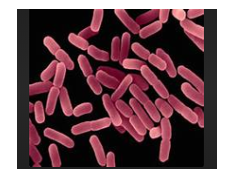
Fig 9: E. coli are Rod shaped bacteria and is used as a model Organism, as it has the ability to be used in molecular genetics and molecular biology.
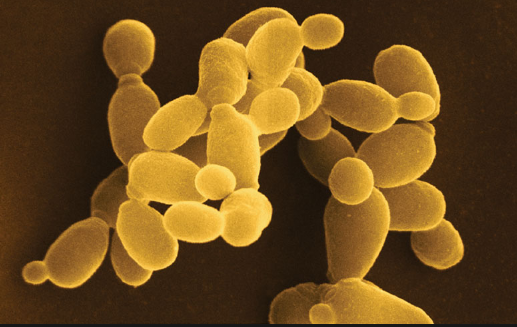
Fig 10: Cerevisiae is a special species of yeast and is extensively used for fermentation
Elegance: Caenorhabditis elegans is a minute, free-living nematode occurring worldwide. Newly hatched larvae are 0.25 millimetres long and adults are 1 millimetre long. C. elegans has a very rapid life cycle which lasts for 3 days (3 days at 25° from egg to egg-laying adult) and exists primarily as a self-fertilizing hermaphrodite, These striking feature have helped scientists to make C. elegans is used extensively in genetic studies and is a powerful choice as a model organism for eukaryotic genetic studies. In addition, because the animal possesses an invariant quantity of somatic cells, researchers have been able to trace the fate of every cell between events like fertilization and adulthood in live animals and to generate a complete cell lineage.
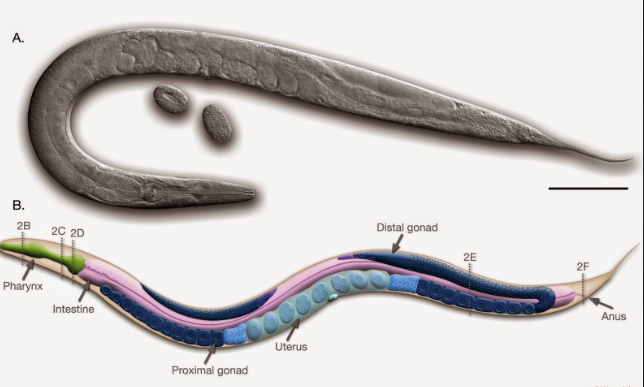
Fig11: C. elegans is a tiny free-living Nematode and has a very rapid life cycle, it is used extensively for eukaryotic genetic studies.
D.Melanogaster: One species of Drosophila in particular, D.Melanogaster, has been extensively used in research in genetics and is a common model organism in developmental biology. In modern biological literature the terms “Drosophila” and the

Fig 12: D.Melanogaster is diverse in its habitat and breeding habits , it is extensively used in genetics.
A. Thaliana: Arabidopsis thaliana is a small flowering plant that is widely used as a model organism in plant biology. This species belongs to the Mustard family (Brassicaceae), which includes species like cabbage and radish.
Arabidopsis is not of major significance in agronomic field, but its striking feature of genome size and ease of cultivation offer good advantages for basic research in Genetics and molecular biology. Arabidopsis thaliana has a genome size of approximately 135Mb and has a haploid chromosome.
A. thaliana is considered a weed; it is occurred by roadsides and in plain disturbed land.
This species occurs in winter as an annual plant and has relatively short life cycle, A. thaliana is a popular model organism in genetics and plant biology. For a complex multicellular eukaryote, A. thaliana has a relatively small genome of approximately 135 mega base pairs (mbp). It was the first plant to have its genome sequenced, and is a popular tool for understanding the molecular biology of many plant traits, including light sensing and flower development.
M.musculus: The house mouse (Mus musculus) is of the order of Rodentia, it is a small mammal, that has a characteristic ear that are rounded a long and hairy tail a pointed snout. The species are great in number and belong to the genus Mus. Although the mammal is a wild animal, the house mouse has benefited immensely from being associated with human habitation to the point where human activity is more the wild type are comparatively less than the semi tamed ones.
The house mouse is domesticated as the pet or mouse, and as the laboratory mouse, which is one of the most important model organisms in biology and medicine.

Fig 13: M. musculus, is the Laboratory mouse extensively used for experiments both in medicine and biology.
References: